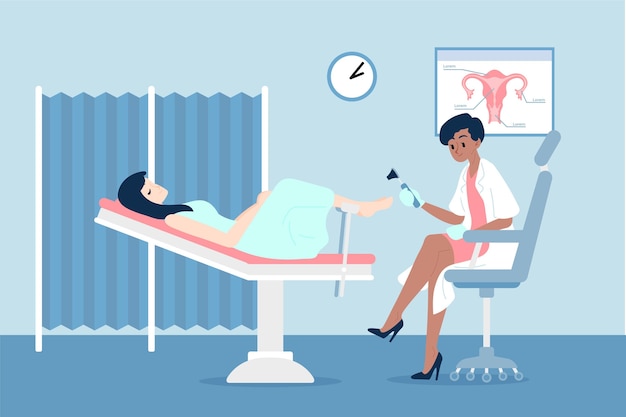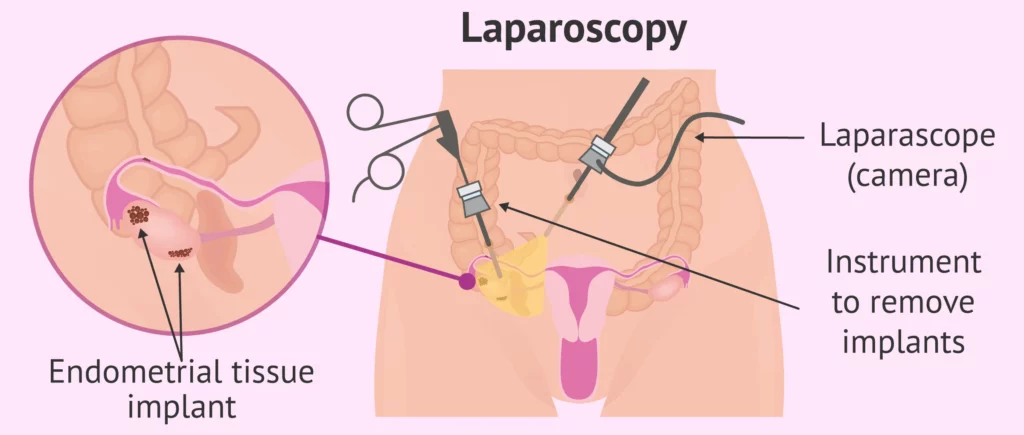Laparoscopic Removal of Endometriosis
The laparoscopic management or removal of endometriosis is more effective and safer than laparotomy. This means that if both are indicated, laparoscopy should be performed since it is associated with fewer side effects and complications. Read More
Top Doctors For Laparoscopic Removal of Endometriosis Treatments
Top Hospitals For Laparoscopic Removal of Endometriosis Treatments
Laparoscopic Removal of Endometriosis
Introduction
Endometriosis is a term used to describe when cells that resemble the uterus lining, also known as endometrial cells, grow outside the uterus. This tissue can attach to organs like the ovaries and fallopian tubes. Endometriosis is a chronic and noncancerous condition.

The symptoms of this condition are usually exacerbated during the menstruation periods. Signs and symptoms include:
- pelvic pain
- heavy periods, or bleeding between periods
- increased pain during periods and intercourse
- pain with bowel movements and urination
- fatigue
- diarrhea
- bloating
- constipation
- low back pain
- intense cramping
Diagnosis of Endometriosis
The diagnosis of this condition is surgically oriented as no tests can be performed to confirm the condition definitively. Due to the risks associated with the procedure, a report of endometriosis symptoms does not immediately preclude a surgical exploration. This means that non-invasive methods are employed to rule out other conditions first.
The use of imaging techniques such as ultrasound and x-ray can go a long way in ruling out possible inflammation, fibroid, or cancerous conditions. In cases of large endometriotic cysts known as endometriomas, a transvaginal ultrasound can be used as a diagnostic tool.
Indications for Laparoscopic Removal of Endometriosis
Following clinical examination, hormonal therapy may be recommended for suspected cases of endometriosis. However, even with hormonal treatment, some symptoms can persist. Due to variable health conditions, some women with endometriosis cannot use estrogen-based drugs since they increase the chances of a stroke. This can be an indication of laparoscopy. It is, therefore, necessary to assess each case on a patient basis to ensure that the best treatment approach is used.
Laparoscopy, a minimally invasive surgery requires only small incisions. Other conditions that may require a laparoscopic exploration in suspected endometriosis cases are:
- Prolonged vaginal bleeding
- Infertility: Proper investigation should be carried out to rule out other causes of infertility before a laparoscopic examination is performed.
- Pain during intercourse
- Chronic pelvic pain
- Difficulty in urinating: It is necessary to check for other causes of difficulty in micturition like urinary tract infections, inflammations, and tumors.
- Pain during bowel movements: Like in other conditions, a gut examination should be performed to ensure the absence of other underlying conditions which may result in pain during bowel movement.
Contraindications
Research has shown that if the symptoms of endometriosis do not come with chronic pain then medical management is the best approach. Adolescent women should be managed with hormonal treatment before laparoscopy. This is because they usually suffer from an early stage of the disease.
Endometriosis surgery

Endometriosis surgery involves the removal of endometriosis. There are two different approaches:
- Laparoscopy: This is a minimally invasive procedure used in the diagnosis and treatment of endometriosis. It makes use of a laparoscope and the incision required is very small.
- Laparotomy: This procedure is more invasive than laparoscopy and requires a longer incision line. It is performed under general anesthesia. It is no longer as common as before and is performed if the endometriosis is severe or the patient is not qualified for a laparoscopy. It is associated with more post-surgical complications than the former.
Types of laparoscopy techniques for endometriosis surgery
The two major techniques employed in the laparoscopic management of endometriosis are excision and ablation.
Excision as the name implies deals with the surgical removal of the endometrial tissue via cutting while ablation involves the destruction of the endometriosis cells using diathermy. Both techniques can be combined for greater effect. The choice of technique is dependent on the size and location of the tissues. However, excision is preferred as tissues can be sent to the lab for examination.
Procedure
Fasting is recommended at least 8 hours before the surgery. Like with all surgical procedures, a physical examination and blood work would be performed. This ensures that the patient is fit for the procedure.
Depending on the surgeon and other patient-dependent factors, a laparoscopy or laparotomy can be performed. In recent times, however, the majority of people who need this surgery will undergo a laparoscopy.
The main surgery is usually done under general anesthesia and the vital parameters are monitored by the anesthetist.
- A small incision is made around the belly button or any other part of the abdomen. Multiple incisions may be made.
- The abdomen is then inflated for better visualization of the abdominal cavity for the procedure.
- This is then followed by the insertion of the laparoscope. With this, one can visualize the affected areas.
- Depending on whether an excision or diathermy will be performed, the appropriate instrument is attached to the laparoscope and guided to remove the endometriosis. They may also remove cysts, implants, and scar tissue caused by endometriosis.
- The removal of the endometriosis is then followed by a closure of the surgical incision.
Complications
Endometriosis surgery is relatively safe. However, there are potential risks with any surgery, such as:
- Infection: A post-surgical infection may occur due to a lack of asepsis during surgical and post-surgical management. This could lead to potentially delayed wound healing and longer hospitalization. The infection may affect the bladder, uterus, or abdominal incision,
- Bleeding: Depending on the size and location of the tissue, postoperative hemorrhage may occur after laparoscopy in endometriosis.
- Possible injury to nearby organs: Trauma to the bladder, bowel, ureter, uterus, fallopian tube, ovary, blood vessels, and nerves has occurred following this surgery. Another surgery is usually indicated for correction purposes.
- Fistula: A fistula (which is an abnormal connection between two organs) can happen during the laparoscopic removal of endometriosis. This may be due to inadvertent excision and subsequent healing or improper apposition during suturing.
- Deep vein thrombosis: Blood clots in the legs or lungs can occur after endometriosis surgery.
- Adhesions and scar tissue formation: Adhesions and scar tissue formation can happen as a result of the surgery. This may affect multiple tissues and structures.
- Failure to treat all endometriosis or failure to improve symptoms
- Death
Conclusion
The laparoscopic management or removal of endometriosis is more effective and safer than laparotomy. This means that if both are indicated, laparoscopy should be performed since it is associated with fewer side effects and complications.






















































































































































